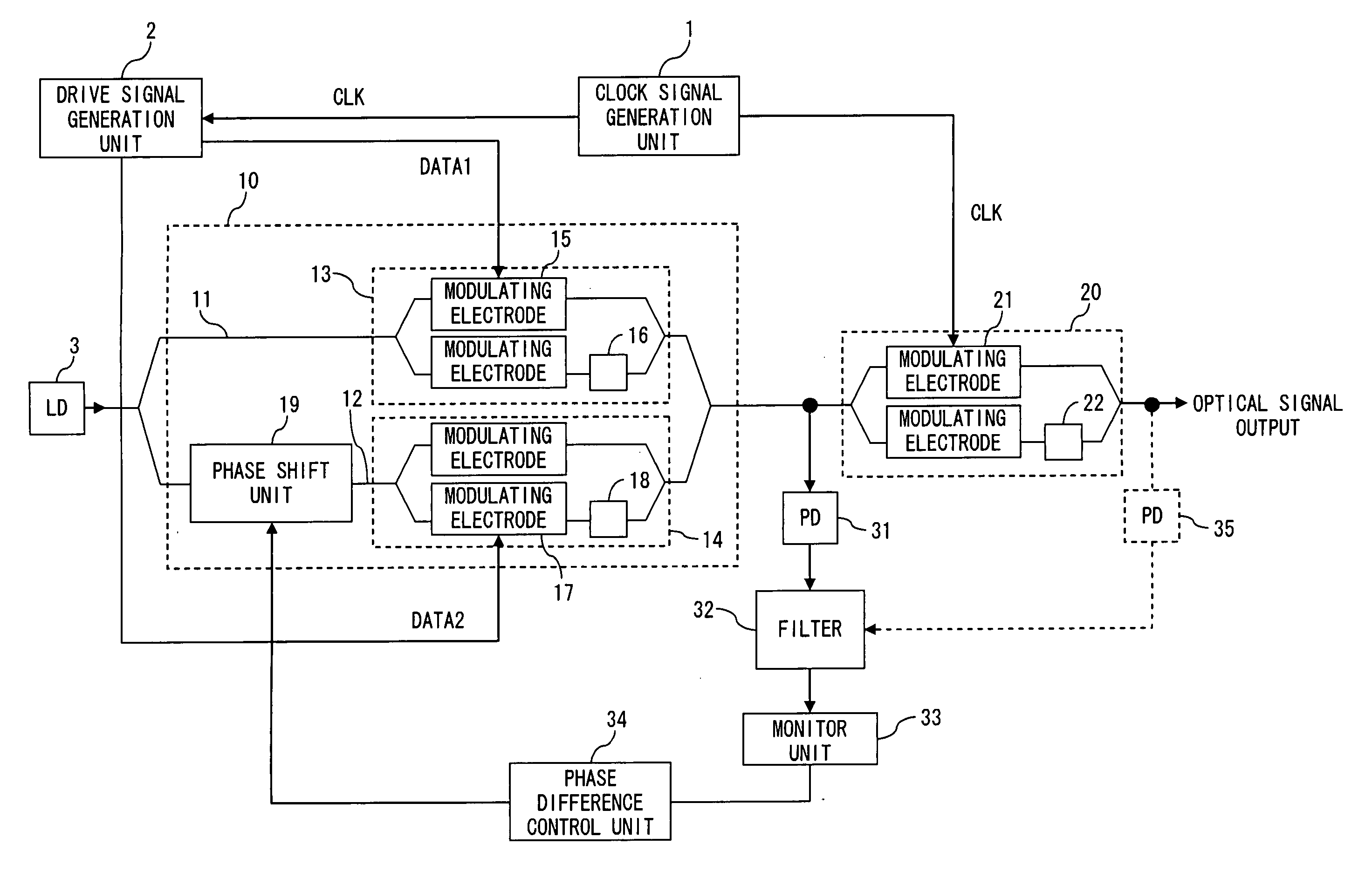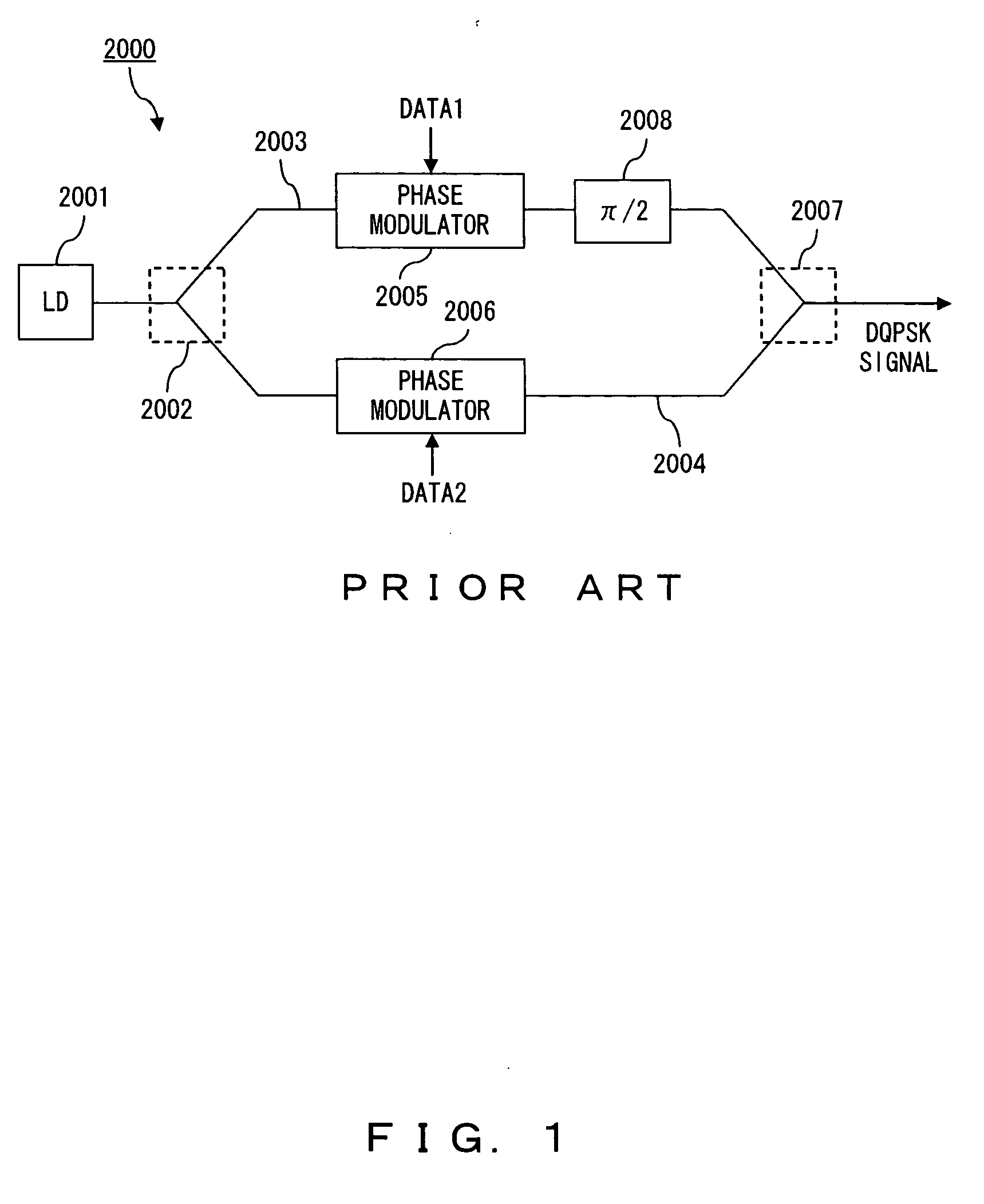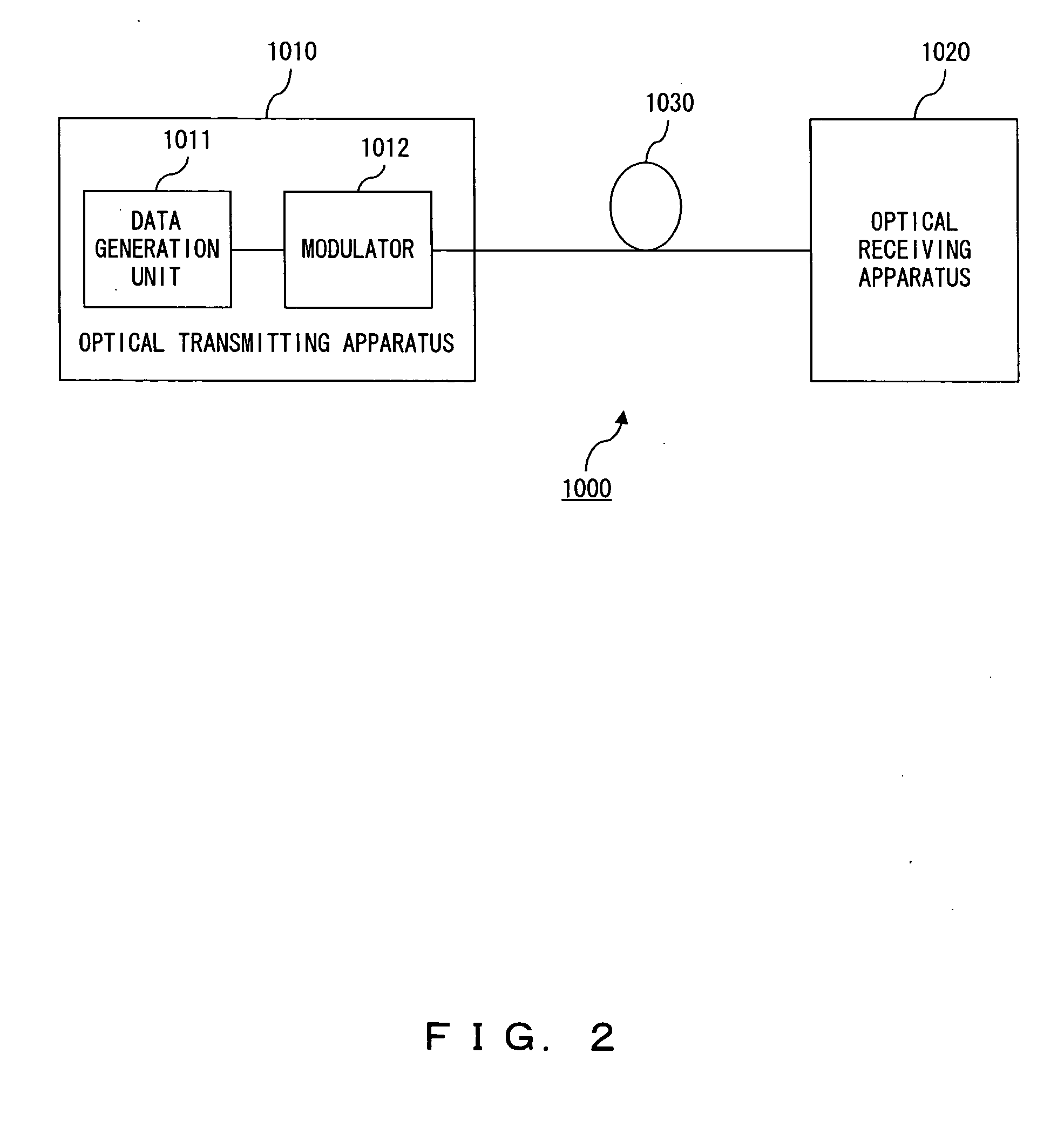Optical transmitting apparatus and optical communication system
a technology of optical communication system and optical transmission apparatus, which is applied in the direction of optics, electromagnetic transceivers, instruments, etc., can solve the problems that the amount of phase shift may sometimes deviate from the prescribed value, and achieve the effect of constantly avoiding deterioration of communication quality
- Summary
- Abstract
- Description
- Claims
- Application Information
AI Technical Summary
Benefits of technology
Problems solved by technology
Method used
Image
Examples
first embodiment
[0045]FIG. 5 is a diagram describing a configuration of the optical transmitting apparatus of the first embodiment of the present invention. This optical transmitting apparatus generates and transmits a DQPSK optical signal in the following description.
[0046] In FIG. 5, a clock signal generation unit 1 generates a clock signal. The frequency of the clock signal is, for example, a symbol frequency. In this case, if the bit rate of the transmitted data is 43 Gbps, the symbol frequency is 21.5 GHz. A drive signal generation unit 2 generates data signals DATA1 and DATA2 for generating a modulated optical signal. Here, the data signals DATA1 and DATA2 can be obtained by encoding the transmission data using a DQPSK pre-coder. An optical source (LD) 3 is a semiconductor laser, for example, and generates an optical CW. The wavelength of the optical CW is not limited in particular; however, 1550 nm band is used for example.
[0047] A data modulator unit 10 generates a DQPSK optical signal by...
second embodiment
[0062]FIG. 11 is a diagram showing a first configuration of an optical transmitting apparatus of the second embodiment of the present invention. In the optical transmitting apparatus of the second embodiment, the amount of phase shift is adjusted using a low-frequency signal. Numerical references shared in FIG. 5 and FIG. 11 indicate the same elements.
[0063] A low-frequency oscillator 41 generates a low-frequency signal with several kHz through several MHz. In the following description, the frequency of the low-frequency signal is referred to as “f0”. The low-frequency signal is a sinusoidal signal or rectangular wave signal, for example, and its amplitude is so small as not to give adverse effect on optical signals to be transmitted. The low-frequency signal is fed to the phase shift unit 19 via a low-frequency superimposing unit 42. For that reason, the amount of phase shift in the phase shift unit 19 changes (or dithers) on a periodic basis in accordance with the voltage of the ...
third embodiment
[0095]FIG. 28 is a diagram showing a first configuration of the optical transmitting apparatus of the third embodiment of the present invention. FIG. 29 is a diagram showing a second configuration of the optical transmitting apparatus of the third embodiment of the present invention. The numerical references in common among FIG. 5, FIG. 28 and FIG. 29 indicate the same elements. Either of the photodetector 31 or the photodetector 35 can be used as a photodetector.
[0096] In FIG. 28, a DC component removal element 51 is, for example, a condenser, and removes the DC component from the output signal of the filter 32. A mixer 52 squares the output signal of the DC component removal element 51. Here, the mixer circuit 52 is not limited in particular; however, is realized by an analog multiplier circuit comprising a Gilbert cell, for example. In such a case, a squared signal is obtained by multiplying the output signal of the DC component removal element 51 by itself using the analog mult...
PUM
 Login to View More
Login to View More Abstract
Description
Claims
Application Information
 Login to View More
Login to View More - R&D
- Intellectual Property
- Life Sciences
- Materials
- Tech Scout
- Unparalleled Data Quality
- Higher Quality Content
- 60% Fewer Hallucinations
Browse by: Latest US Patents, China's latest patents, Technical Efficacy Thesaurus, Application Domain, Technology Topic, Popular Technical Reports.
© 2025 PatSnap. All rights reserved.Legal|Privacy policy|Modern Slavery Act Transparency Statement|Sitemap|About US| Contact US: help@patsnap.com



